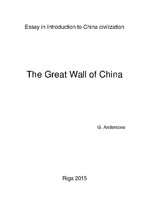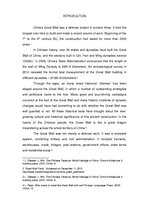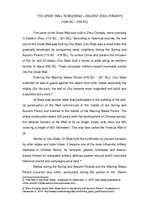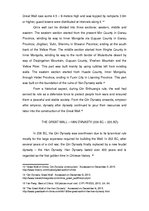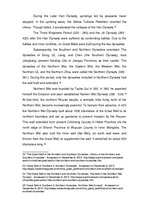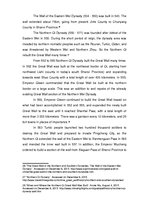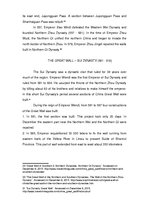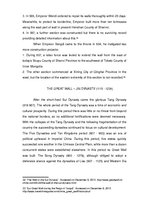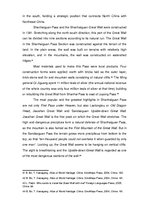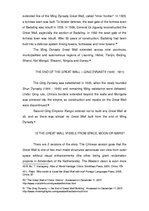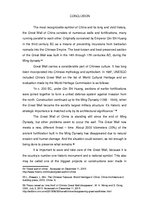-
The Great Wall of China
Essays18 Design, Architecture, Construction and construction works, History, Culture
CONCLUSION
The most recognizable symbol of China and its long and vivid history, the Great Wall of China consists of numerous walls and fortifications, many running parallel to each other. Originally conceived by Emperor Qin Shi Huang in the third century BC as a means of preventing incursions from barbarian nomads into the Chinese Empire. The best-known and best-preserved section of the Great Wall was built in the 14th through 17th centuries AD, during the Ming dynasty.
Great Wall carries a considerable part of Chinese culture. It has long been incorporated into Chinese mythology and symbolism. In 1987, UNESCO included China’s Great Wall on the list of World Cultural Heritage and an evaluation made by the World Heritage Commission is as follows:
“In c. 200 BC, under Qin Shi Huang, sections of earlier fortifications were joined together to form a united defense system against invasion from the north. Construction continued up to the Ming Dynasty (1368 - 1644), when the Great Wall became the world’s largest military structure. It’s historic and strategic importance is matched only by its architectural significance.”
The Great Wall of China is standing still since the end of Ming Dynasty, but other problems seem to occur the wall. The Great Wall now meets a new, different threat – time. About 2000 kilometers (30%) of the ancient fortification built in the Ming Dynasty has disappeared due to natural erosion and human damage. And the situation could worsen, as not enough is being done to preserve what remains.
…
The essay describes The Great Wall of China - history, development, building, purpose and meaning through the years. Beginning of the 7th to the 8th century BC, the construction had lasted for more than 2000 years. Great Wall carries a considerable part of Chinese culture. It has long been incorporated into Chinese mythology and symbolism.

